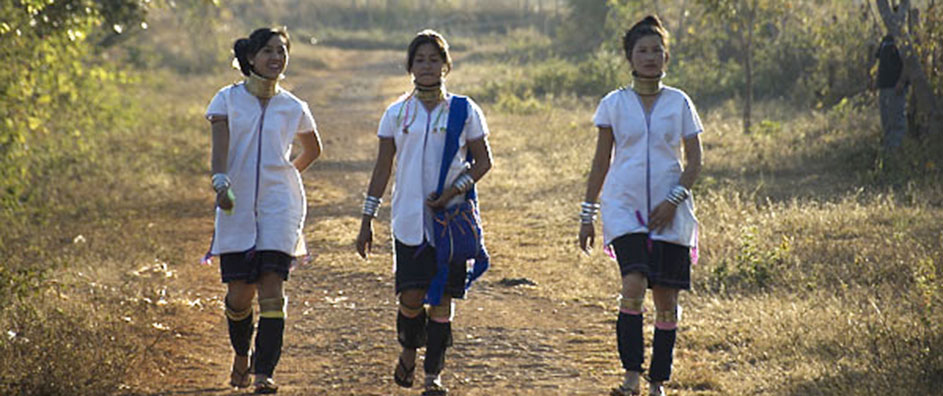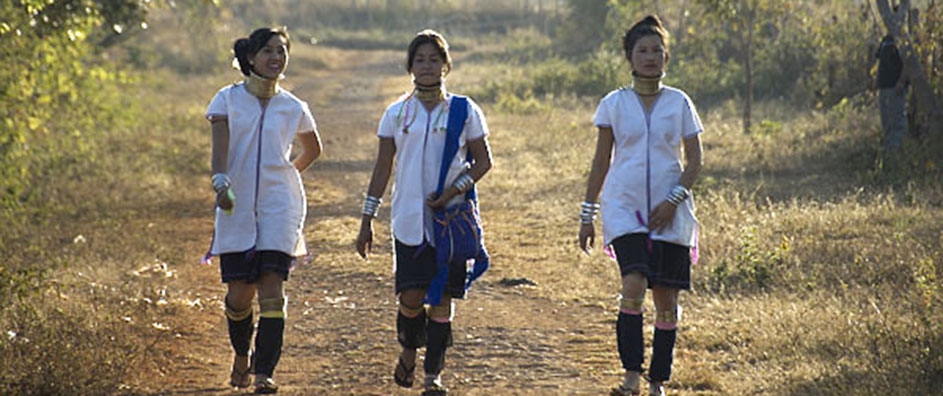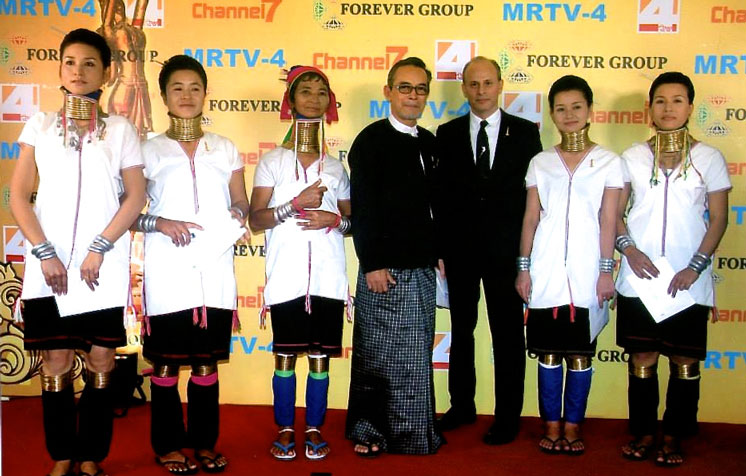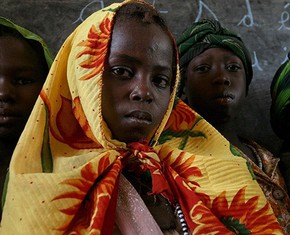 In a remote rural town of Dou Ngan Kha, not far from Myanmar’s border with Thailand, tribes from the Kayan people gather every year for a National Festival. Through ceremonies, music and dance, the annual event serves to preserve their traditions and celebrate their achievements.
In a remote rural town of Dou Ngan Kha, not far from Myanmar’s border with Thailand, tribes from the Kayan people gather every year for a National Festival. Through ceremonies, music and dance, the annual event serves to preserve their traditions and celebrate their achievements.
Part of Myanmar’s Tibeto-Burman ethnic minority, Kayans have lived here for generations but, in the late 1980s and early 1990s, civil unrest forced many Kayans to flee Myanmar for Thailand. Often misunderstood in their own homeland, the Kayan Lahwi women in particular have become known around the world for the coils of decorative brass rings they wear around their necks.
This month’s Festival honored two filmmakers who have brought the Kayan culture to a wide audience through a feature-length drama that has been acclaimed in Myanmar and further afield.
In front of high-ranking officials, as well as the region’s Roman Catholic Archbishop Matthias Shwe and senior Buddhist monks, the creators of Kayan Beauties – writer and director Aung Ko Latt, who is a member of Myanmar’s Baha’i community, and screenwriter Hector Carosso from New York City – were presented with awards that expressed the profound appreciation of the Kayan people.
The film tells the story of three Kayan women who travel from their village to sell handicrafts in a distant city. A young girl who has recently acquired her first brass rings accompanies them. In the city, human traffickers abduct the girl. So, far from home and out of their element, the women find themselves involved in a desperate search for their friend.
Aung Ko Latt first visited the region some years ago at the request of Archbishop Shwe to teach music in the villages. He stayed almost eight months. “From the very beginning, I felt a strong connection to the people and to their culture,” said Mr. Latt. “The Archbishop has been a strong advocate of the Kayan, often offering refuge to them and other groups. Through our conversations, I had the spark of an idea for the film.”
Minority groups are, as a whole, marginalized in Myanmar, explained Hector Carosso, “and with regard to films, normally not considered. And the horrible reality of human trafficking is growing in every country of the world.”
Mr. Latt’s desire to create a film about the Kayan was very much motivated by his Baha’i beliefs. “Very simply, humankind is one,” he said. “Kayan Beauties is a movie for humankind, containing lessons and ideas for all humans.”
“No religion accepts discrimination, trafficking and selling people. Also, the promotion of women’s empowerment is strong in the story. It shows that in remote areas and villages, there are real people; they are not somehow less than city people.”
The recognition at the Kayan National Festival is not the first time in recent months that Kayan Beauties has won acclaim. It received the Special Jury Award at the ASEAN International Film Festival in Kuching, Malaysia, becoming the first film in Myanmar’s history to win an international accolade. Last December, at the 56th Annual Myanmar Academy Awards, Mr. Latt won in the Best Cinematographer category and the film also took the award for Best Sound. Kayan Beauties was the first Myanmar film to incorporate the international standard of Dolby digital sound technology.
To produce the film, its makers were faced with some major technical, logistical and financial obstacles, along with overcoming censorship issues. All the equipment had to be sourced from other countries and the Myanmar crew trained to learn how to use it. Permission also had to be sought from several different Ministries in order for Mr. Carosso to be able to enter some of the areas where they filmed.
Despite these challenges, the finished film has succeeded in promoting a greater appreciation of the Kayan people and their culture.
“We wanted to show that serious issues can be addressed in Myanmar films and that people will go to watch it, whereas the prior assumption was that only comedies, action films and weepy dramas could capture the audience,” said Mr. Latt.
“The challenge now is for future filmmakers in Myanmar to address other serious issues in dramatic and compelling ways.”

















Comments
Sign in or create an account
Continue with Googleor